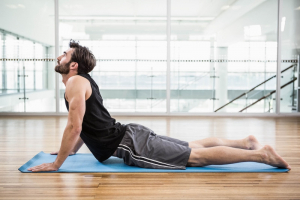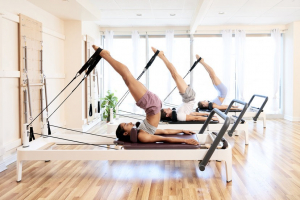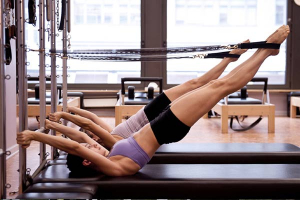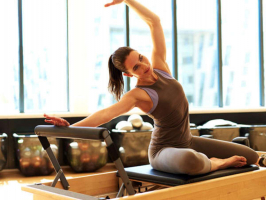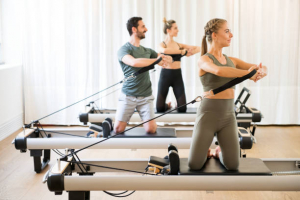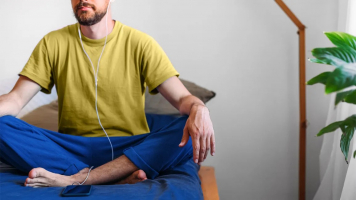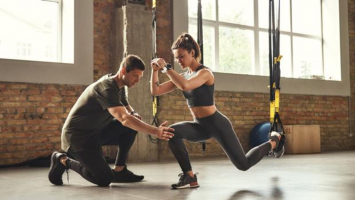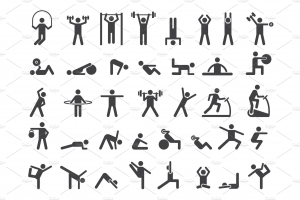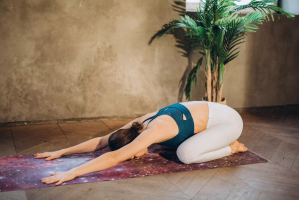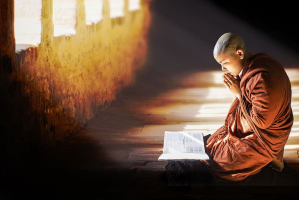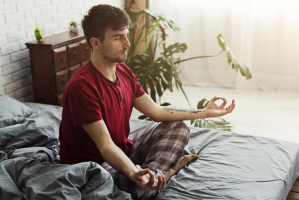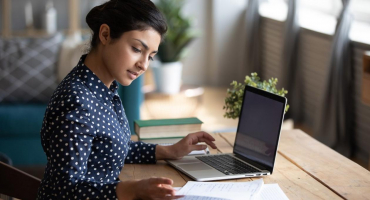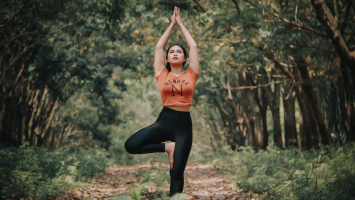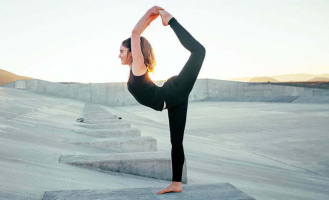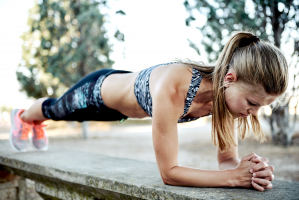Top 7 Fundamental Pilates Exercises
Joseph Pilates created Pilates as a functional exercise method. The Pilates approach places a strong emphasis on core stability, which is critical for ... read more...maintaining a well-balanced physique. Pilates exercises are designed to strengthen muscles, promote flexibility, and increase joint range of motion. Pilates is a "functional fitness" program, which means its basic principles help people achieve more graceful, efficient movement in everyday life, such as better posture. Pilates is so beneficial, in fact, that it is frequently employed in physical therapy and rehabilitation settings. Today, let's follow Toplist to discover some fundamental Pilates exercises.
-
The pelvic curl mat exercise is commonly used as a moderate warm-up for the spine and abdominal muscles in Pilates sessions. To achieve a pelvic tilt, lie on your back and tighten your abs, then curl your tailbone upward until your body is in a straight line between your knees and shoulder blades. It also works the lower body and aids in breathing and movement coordination. You can do it in a series to aid people with back discomfort, in addition to using it as a warm-up. Spine stretch is a good counter stretch for pelvic curl.
If you're doing the pelvic curl correctly, the abdominal muscles should be doing the majority of the work. This distinguishes it from the similar-looking bridge exercise, which puts more emphasis on the glutes, hamstrings, and erector spine of the back. The idea is to have the back along for the ride, with adequate sequential articulation and less involvement from the glutes and hamstrings.
The purpose of pelvic curl is to learn to control your breathing and movement patterns while slowly articulating your spine. Many Pilates movements make use of this understanding. The pelvic curl can be utilized in physical therapy and back injury rehabilitation.Pelvic curl is considered one of the fundamental Pilates exercises, but there are some mistakes that individuals make when they practice. Avoid these blunders to get the most out of this workout while avoiding injury.
- Too Much Arching
Only arch your back until your shoulder blades begin to lift off the mat. Put an end to it there. More will begin to put strain on your neck, as well as risk excessive back arching. - Excessive Speed
This should be done vertebra by vertebra, up and down. The emphasis is on bodily awareness and control. - Shoulder and Neck Tension
Throughout the workout, keep your shoulders and neck relaxed.
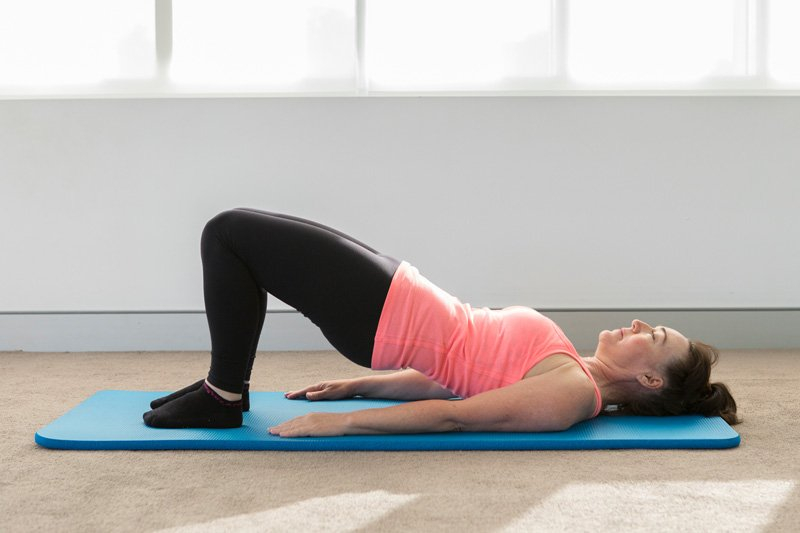
Photo: pilatescan.com.au 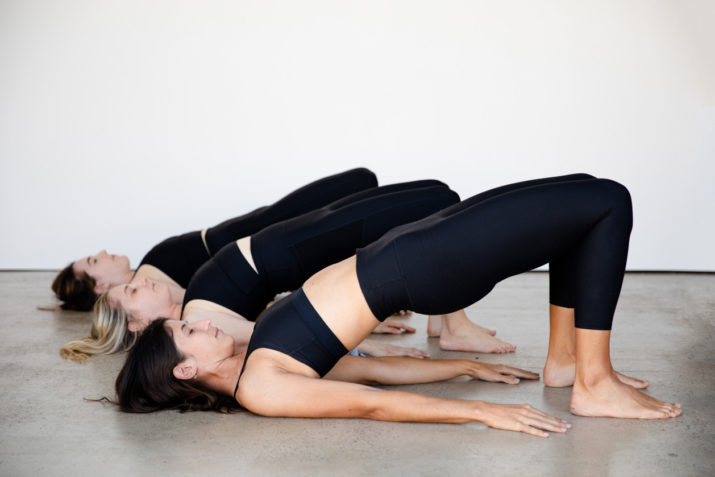
Photo: themerrymakersisters - Too Much Arching
-
Chest raises, whether as part of a Pilates practice or as a stand-alone exercise, strengthen your core and increase flexibility. The move can also adjust to your workout's location and intensity. You may do it in the gym or in your living room, or for a more advanced workout, try variations on the original technique.
The Pilates chest raise appears to be similar to an abdominal crunch at first appearance, but there are a few important differences.
Pilates chest raises are excellent for toning and sculpting your abdominal muscles, while also strengthening the supporting muscles of your chest and upper back.
Chest lifts can also assist you maintain good posture and strong neck muscles. This exercise has a unique benefit in that it requires you to learn how to isolate muscles in your chest and back that you may not realize contribute important spine support. Muscle strain that causes back and neck pain, as well as headaches, can be reduced by strengthening your spine's support.
As you move through your day, a strong, stable core also supports the rest of your body, including your pelvic girdle. Exercises that strengthen and stretch these muscle groups can assist improve coordination and balance as you get older.This exercise also have some errors that you can notice:
- Your Deep Abs Aren't Engaged
- You Strain Your Neck
- You're Jutting Your Chin Out
- You're Going Too Fast
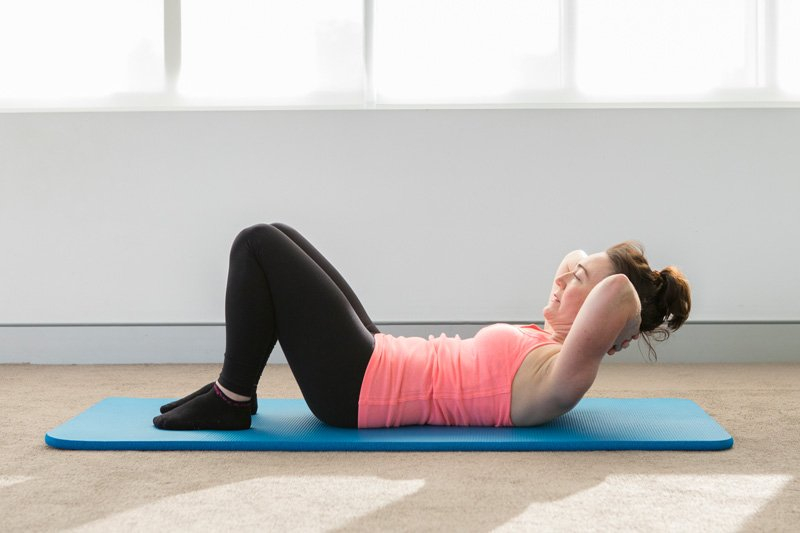
Photo: pilatescan 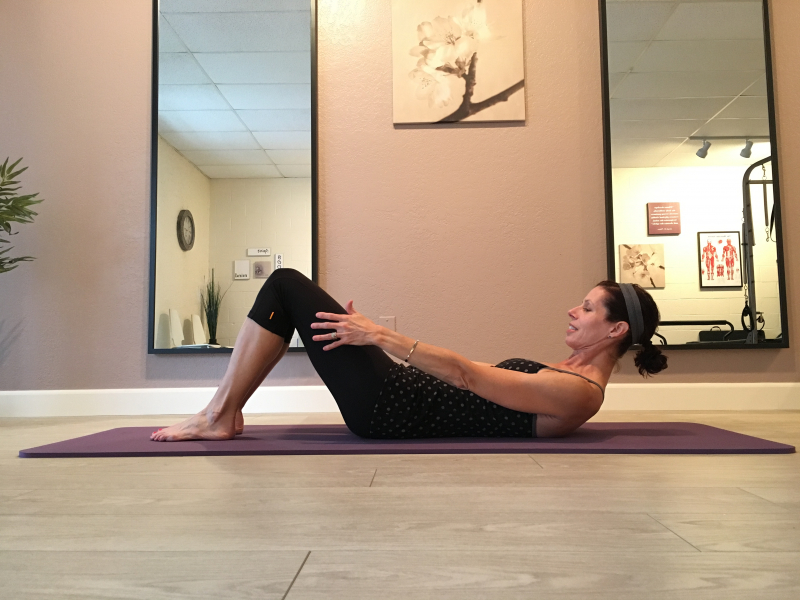
Photo: coreconnectionpt -
Spine Twist Supine is a yoga and mat Pilates movement that is frequently performed. Many YouTube fitness videos and at-home workout DVDs feature it as a popular movement. However, while many consumers and some untrained instructors regard this exercise only as a stretch, physical therapists and certified Pilates instructors are aware of the true purpose of this exercise.
Spine Twist Supine in Supine (supine means on your back) was created to strengthen the oblique muscles in a prolonged position rather than just stretching them. Although this exercise can be done as a stretch, its primary goal is to stabilize your core and strengthen your obliques. The spine twist also improves posture and allows you to breathe in a way that Joseph Pilates advocated: taking in a lot of fresh air and forcing out the old air with movement. The twisting motion in the spine twist makes you feel as if you're physically squeezing the old air out.
Many people try to twist and stretch their lower backs by separating their knees and simply stretching from one area to the other. However, because the major purpose of this exercise is to improve stability and strength, the knees should be held together and leveled throughout the movement to ensure good alignment. People who are unable to keep their knees leveled while they rotate frequently have problems with their lumbar spine (lower back). The thoracic spine (upper back) should rotate so that the obliques can be stretched and strengthened.
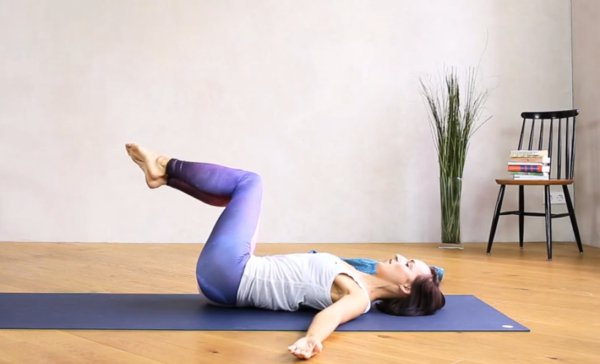
Photo: doyou Source: yoopod youtube channel -
Learning to move from the center is the goal of the single-leg stretch. One of the best Pilates mat exercises for training the lower abdominals is this stretch. It also improves muscle endurance and stability.
This exercise is not to be confused with a single straight leg stretch, which stretches the rear of the thighs' hamstring muscles. The single-leg stretch is a great way to start a tummy sequence or as a warm-up exercise.
The Pilates single-leg stretch strengthens the abdominals by teaching them to initiate movement and support and stabilize the trunk as the arms and legs move. A strong core aids in the development of torso and back stability. Pilates can assist to relieve and prevent back pain and strain.
The Pilates single leg stretch improves mobility and flexibility while also giving strength through a wide range of motion, which is particularly important as you become older. Pilates is beneficial for those who require rehabilitation or adaptations, and it can help to alleviate low back pain. The single-leg stretch can be adjusted as needed for physical rehabilitation.
Because the single-leg stretch is such one of the fundamental Pilates exercises, make sure you're using proper form. When it comes to the single-leg stretch, there are a few frequent blunders to avoid
- Maintaining a sturdy and still torso
- Allowing your feet to move in a biking motion.
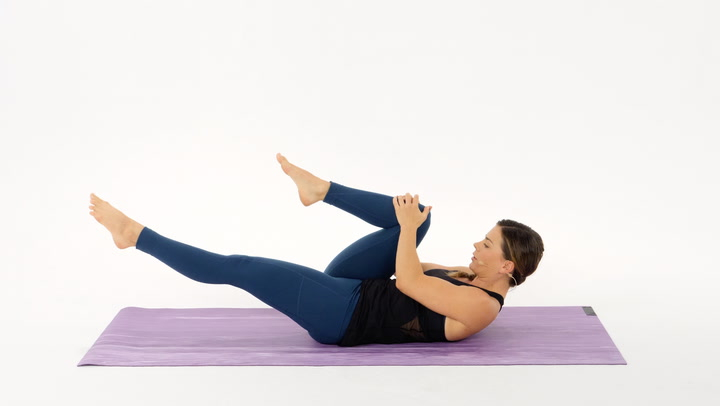
Photo: nwishop Source: Pilates Anytime youtube channel -
One of the most common Pilates mat exercises is the roll-up. The roll-up is a well-known Pilates flat abs exercise that provides a great test for the abdominal muscles. One Pilates roll-up is considered to be equivalent to six normal sit-ups, and is far superior to crunches for achieving a flat stomach. After the hundred, the roll-up is performed, followed by the roll-over.
While rolling up is one of the first mat exercises you will learn, it is difficult, and you may need to adjust it or increase your core strength before you can execute it correctly.
You activate your spine and build your abdominal muscles by putting them through a wide range of motion with the roll-up. You practice control, which is one of Pilates' cornerstones, by moving at a slow and deliberate pace. Rolling up is also a great way to improve core strength, stability, and muscular endurance. These advantages will carry over into your regular life, enhancing your ability to execute lifting and bending chores while protecting your spine. You'll also be less likely to fall and get hurt.
The roll-up is a problem for a lot of folks. Common disappointments include difficulty getting up at all, rolling up yet having the feet rocket up, and coming up with momentum (a jerking motion) rather than strength. So consult an expert as well as practice regularly to be able to practice a correct posture.
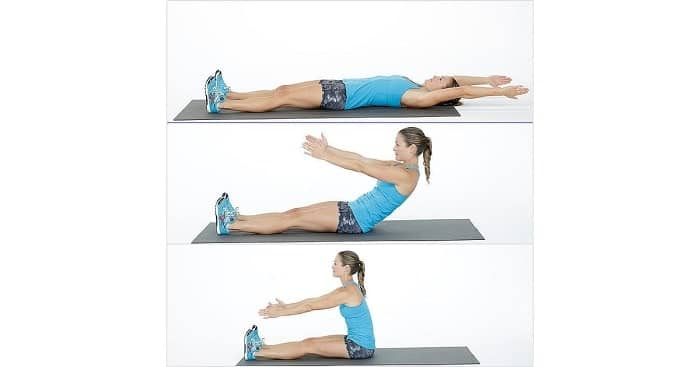
Photo: giamcandep Source: Pilates Anytime youtube channel -
Rolling like a ball is a traditional Pilates movement that is almost always included in Pilates mat courses. Some folks can roll up like a pill bug and start having a lot of fun straight away with this activity. Rolling exercises are a little more difficult for people with low backs that don't round as well, but they're definitely worth the effort.
Rolling back with support is a wonderful warm-up for this exercise. You'll need to keep your abdominal in a good C-curve scoop. Make sure you're sitting on a cushioned surface. For the spine, a thin mat on a hard floor is insufficient padding. This exercise occurs after one leg circle and just before one leg stretch in the conventional Pilates mat exercise sequence. This exercise, which is similar to the rollover, can be incorporated into a home Pilates mat program.
Rolling exercises excite the spine, engage the abdominal thoroughly, and help you tune into your body's inner flow of movement and breath. You'll discover your natural equilibrium point and learn to manage your movement. You'll be giving yourself a back massage that will help you relax.It looks simple, but this move actually requires quite a few techniques, so practitioners often make quite similar mistakes, which can include:
- Coming up Crooked
- Bumping Instead of Rolling
- Throwing Upper Body Backward
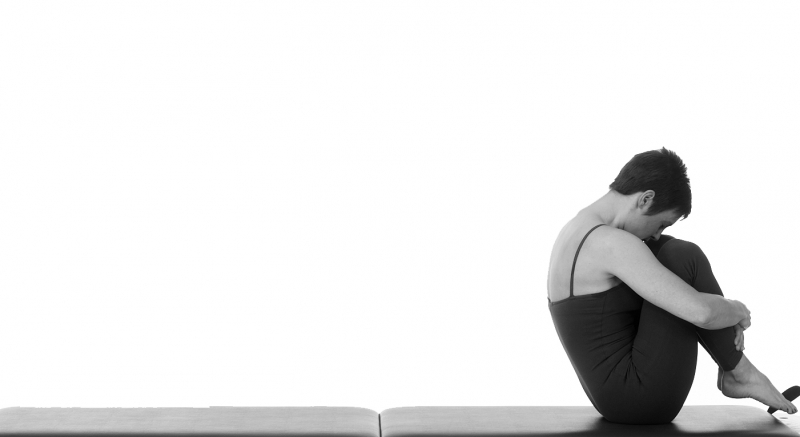
Photo: theteaser.peakpilates Source: MypersonaltrainerTv youtube channel -
A traditional Pilates mat exercise, the single leg circle is one of the greatest for challenging your core strength and pelvic stability. Despite the circular movement of the leg in the hip socket, the abdominal muscles must work hard to keep the entire body under control.
A single leg circle works the quadriceps and hamstrings in addition to the core. It also aids in the maintenance of a healthy hip joint. It's a fantastic way to work your abs while adhering to the Pilates principals of centering, focus, control, precision, breath, and flow. This exercise, like most Pilates routines, involves stretching and strengthening of major muscle groups on both sides of the body, promoting balance and better overall hip function.
This exercise is simple to perform, but difficult to master. During your single-leg circles, be sure your shoulders and pelvis are level. It is more necessary to do this than to fully extend the leg or to make large circles. Your abdominal muscles receive a good workout by keeping the pelvis stable. There is no rolling or rocking allowed!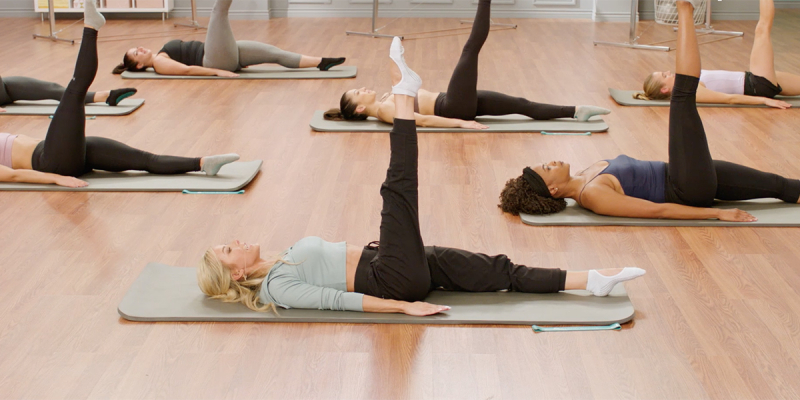
Photo: openfit Source: Pilates Anytime youtube channel









